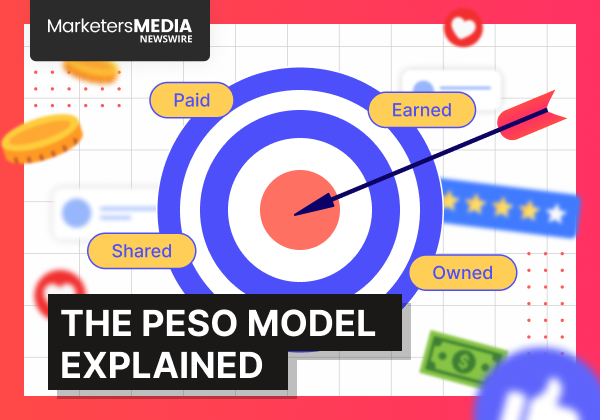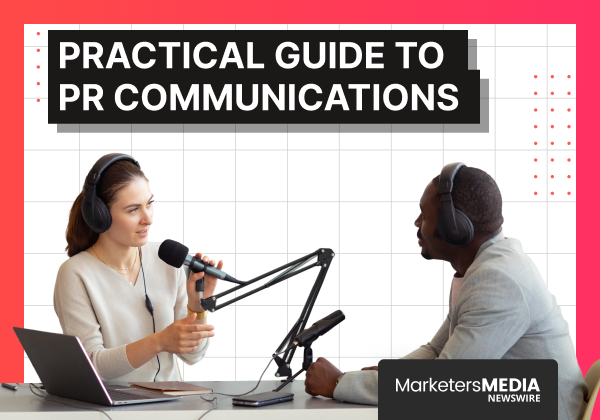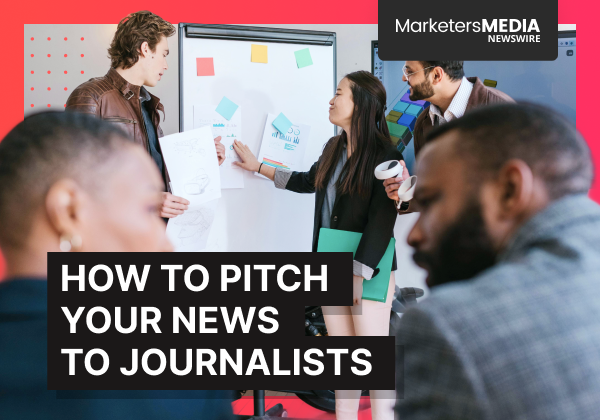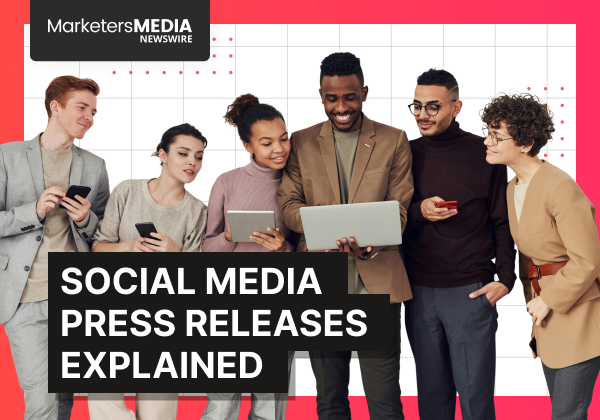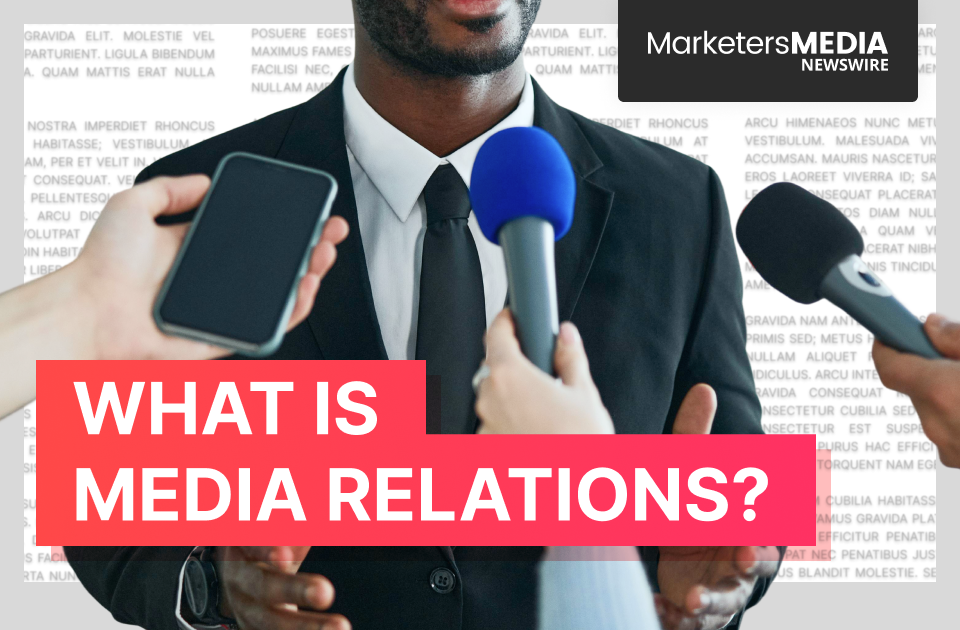PR teams used to focus on one thing: earning media coverage.
Send press releases. Build journalist relationships. Secure media placements. Measure by clippings and impressions.
But today's communications landscape looks different.
Modern audiences don't just read traditional media. They discover brands through social media, consume content on company blogs, and respond to targeted ads across multiple platforms.
The PESO model offers a framework for expanding beyond earned media to coordinate communications across all channels where audiences actually engage.
What is the PESO Model?
The PESO model is a strategic framework that helps communications teams organize their efforts across four complementary media types.
Created by Gini Dietrich in her 2014 book "Spin Sucks," PESO categorizes every communications channel into four types:
- P - Paid Media (advertising and sponsored content)
- E - Earned Media (traditional publicity and media relations)
- S - Shared Media (social media and community engagement)
- O - Owned Media (company-controlled content and channels)
Rather than working exclusively in earned media, PESO shows how you can leverage all four types to amplify your message and demonstrate greater business impact.
The Four Pillars of PESO Media
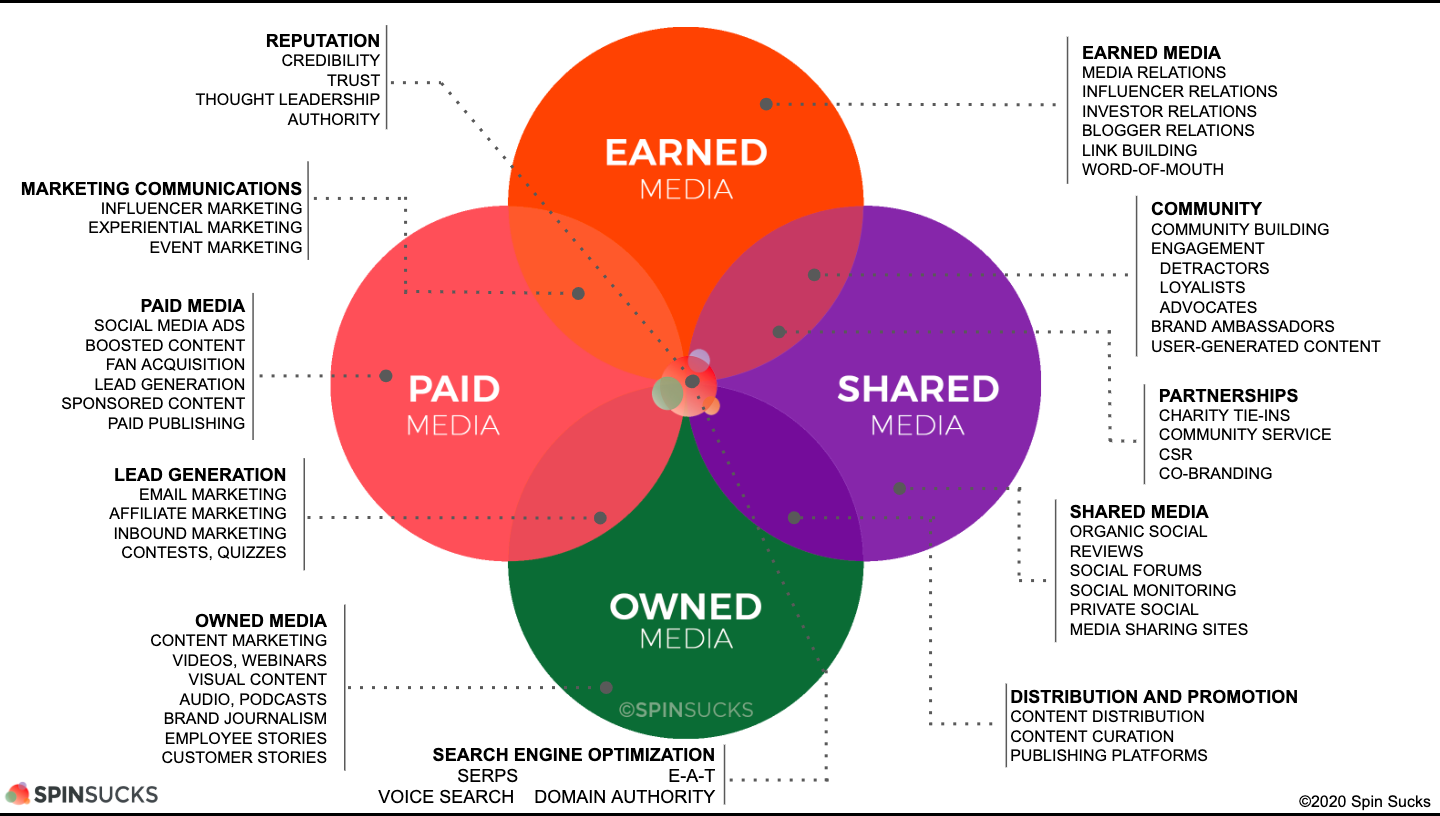
Paid Media
Any content or placement you pay to promote. Think Google Ads, social media advertising, sponsored content, and traditional advertising. You get immediate visibility and precise targeting, but it's clearly promotional.
Earned Media
The traditional core of PR - publicity gained through media relations, journalist relationships, and newsworthy stories. This includes press coverage, journalist interviews, product reviews, and industry analyst mentions.
We’ve gone into more detail about earned media in a separate post with plenty of real examples if you’d like to explore it further.
Shared Media
Content distributed on social platforms that encourages engagement and interaction. Organic social posts, user-generated content, and community discussions all fall here. Great for viral potential, but you're dependent on platform algorithms.
Owned Media
Channels you control completely—your website, blog, email newsletter, podcasts, and mobile apps. This serves as your strategic foundation where you build thought leadership and nurture relationships directly.
Benefits of PESO Approach
Organizations using integrated PESO strategies often see several advantages over single-channel approaches.
Extended Story Lifespan
Traditional PR stories appear once and disappear. PESO extends story impact by repurposing announcements across multiple channels.
A product launch might generate initial press coverage (earned), get discussed on social media (shared), live permanently on the company blog (owned), and reach new audiences through sponsored promotion (paid).

Greater Measurement Capabilities
Teams have long struggled with measurement beyond basic media impressions. PESO provides multiple data points across channels.
Track not just media mentions, but also social engagement, website traffic from coverage, email subscribers from thought leadership content, and lead generation from integrated campaigns.
Reduced Dependency on Media Gatekeepers
Relying solely on journalists and editors for message distribution creates vulnerability. PESO gives PR teams direct channels to reach audiences.
When breaking news dominates media attention or editorial priorities shift, owned and shared channels ensure important company messages still reach stakeholders.
Enhanced Crisis Communication Capabilities
During crises, PR teams need multiple communication channels. PESO provides a ready framework for coordinated response across earned statements, owned explanations, shared community engagement, and paid clarification campaigns.
Now, let’s look at how each media type supports and offsets the others.
How Channel Integration Works
Different media types have different strengths and limitations in communications:
- Paid media provides message control and guaranteed reach, but lacks third-party credibility
- Earned media offers credibility and authority, but timing and messaging can't be controlled
- Shared media enables direct audience engagement, but depends on platform algorithms
- Owned media gives complete editorial control, but typically has limited organic reach
The magic happens in the overlap. Your owned content becomes the foundation for everything else. Social sharing amplifies reach. Earned coverage adds credibility. Paid promotion extends the impact.
So how do you actually build a PESO-powered strategy?
How to Implement Your PESO Strategy
Companies adopting the PESO model typically follow several common steps.
1. Audit Your Current Efforts
Start by categorizing existing PR efforts into the four PESO types. Most teams discover they're heavily focused on earned media while underutilizing owned and shared channels.
Create a simple assessment listing:
- All current marketing channels and activities
- Which PESO category each belongs to
- Resources allocated to each
- Performance metrics for each
This audit reveals gaps and imbalances in your current approach.
2. Start with Owned Media
Before expanding into other areas, ensure your owned media foundation is solid. This means:
- Website optimization: Clear company messaging, executive bios, newsroom section
- Content strategy: Regular, valuable content that demonstrates expertise
- Email systems: Media lists, stakeholder newsletters, crisis communication capabilities
- Analytics setup: Proper tracking for media referrals and content engagement
Your owned media becomes the hub that all other activities point back to.
3. Develop Cross-Channel Content
Plan major announcements with multi-channel distribution in mind. Instead of creating separate materials for each platform, develop core stories that adapt across channels.
For example, a company milestone announcement could become:
- Owned: Detailed blog post with metrics and executive commentary
- Shared: Social media graphics highlighting key achievements and behind-the-scenes content
- Earned: Press release announcing milestone achievement distributed to relevant industry media
- Paid: Promoted LinkedIn posts driving traffic to full announcement
4. Build Integrated Media Relationships
Earned media success still requires relationship building, but PESO expands relationship strategies. Develop connections with:
- Traditional journalists and industry reporters
- Podcast hosts and video series producers
- LinkedIn influencers and industry thought leaders
- Industry analysts and research organizations
- Customer advocates and brand ambassadors
Engage authentically with their content, provide helpful insights, and become a recognized voice in your industry.
5. Create Integrated Campaign Workflows
Develop processes that sequence activities across all four media types. A typical timeline might include:
- Week 1: Publish owned content (blog post, research, etc.)
- Week 2: Create shared content highlighting key points
- Week 3: Launch paid campaigns promoting best-performing organic content
- Week 4: Pitch earned media opportunities based on content performance
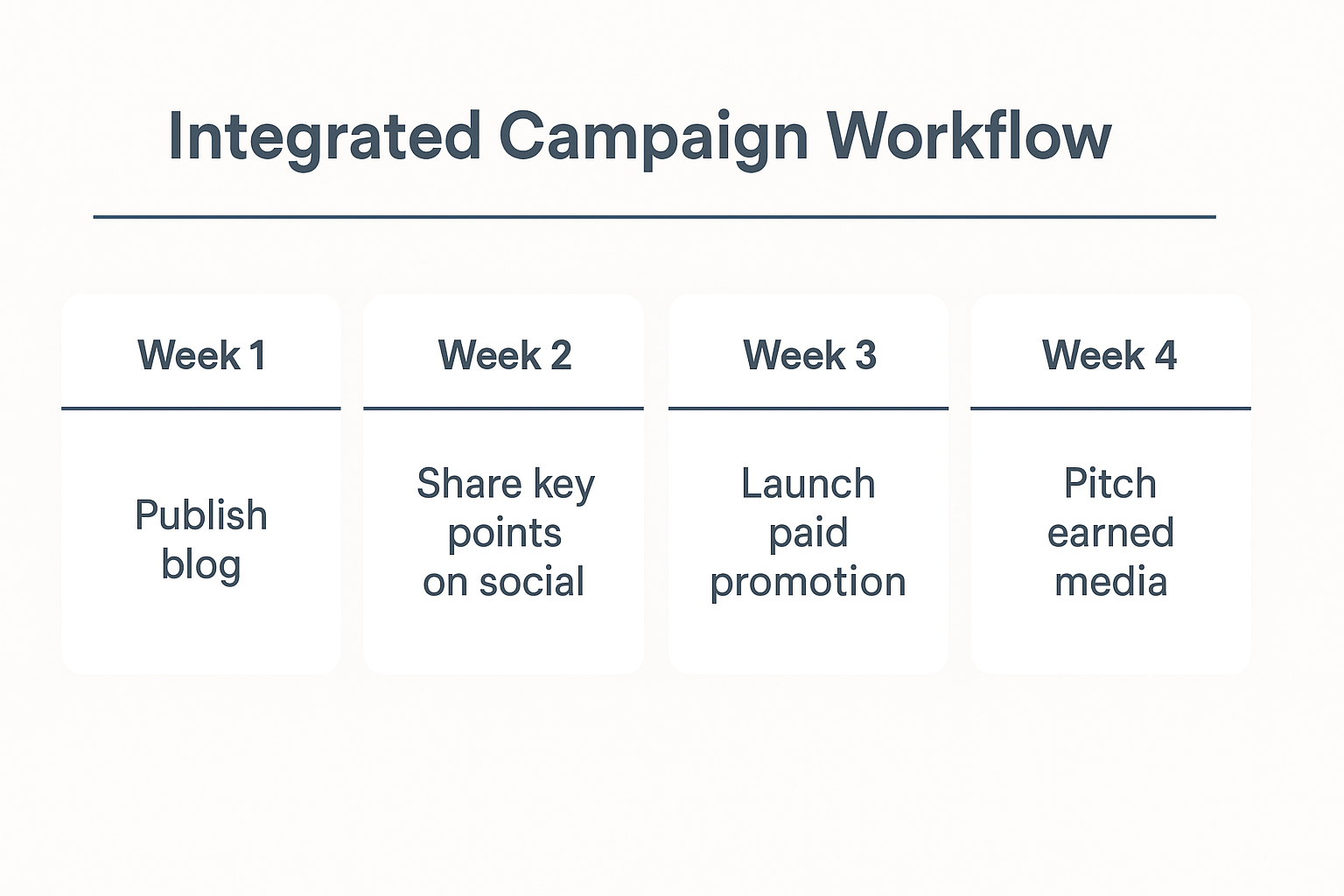
6. Establish Measurement Frameworks
Move beyond vanity metrics to track business outcomes:
- Owned media: Time on page, conversion rates, email subscribers
- Earned media: Referral traffic, brand mentions, domain authority growth from quality publications. Services like MarketersMEDIA Newswire can help track pickup across major outlets including AP News and Business Insider.
- Shared media: Engagement quality, saves/shares, sentiment
- Paid media: Cost per qualified lead, return on ad spend, conversion rates
Focus on metrics that connect communications efforts to business objectives like lead generation, brand awareness, and stakeholder engagement.
7. Coordinate Cross-Functional Teams
PESO implementation often requires closer collaboration between PR, marketing, and social media teams. Communications professionals need shared planning processes and integrated technology platforms.
Start with pilot campaigns requiring cross-team coordination. Use early successes to demonstrate integration value and gradually expand the collaborative approach.
Bringing It All Together
The PESO model isn’t just a strategy—it’s a reflection of how your audience actually engages with brands today: across multiple touchpoints, channels, and voices.
Coordinating Paid, Earned, Shared, and Owned media doesn’t just improve efficiency—it multiplies impact. When these channels work together, they extend your reach, boost credibility, and generate results no single channel could deliver alone.
If you’re ready to put PESO into practice, start with one strong piece of content and plan how it can live across all four media types. Measure what moves. Then optimize and scale.
Need help with earned media or press release distribution?
MarketersMEDIA helps businesses turn key stories into real media coverage across 570+ outlets—including AP News, Yahoo, and Business Insider.
Reach out to us to learn more.
Frequently Asked Questions (FAQ)
Q: Why should I start with Owned media instead of Paid media, even though it's listed first in PESO?
A: Owned media serves as your strategic foundation and "home base" where you have complete control. Building high-quality owned content first (blogs, resources, case studies) establishes your expertise and gives you valuable assets to amplify.
Once you have strong owned content, paid media becomes more effective because you're promoting proven, credible content rather than starting from scratch.
Q: Is the PESO model still relevant with AI and zero-click search results?
A: Yes. PESO isn't outdated—it's the operating system that makes your content discoverable and trustworthy to AI. While AI changes how content is consumed, the fundamentals of trust, authority, and credibility remain crucial.
Content structured through PESO (especially credible Earned and authoritative Owned assets) ensures AI systems find, understand, and accurately share your brand information.
Q: What are the most common mistakes when implementing PESO?
A: The biggest mistakes include working in silos instead of integrating channels, setting unclear goals without SMART objectives, ignoring key metrics for each channel, and sacrificing content quality. Success requires cross-functional collaboration, shared content calendars, and treating PESO as an integrated system rather than four separate tactics.
Q: Can PESO help prove ROI and connect PR efforts to business outcomes?
A: Absolutely. PESO solves the long-standing PR measurement challenge by moving beyond vanity metrics like impressions. By integrating channels and tracking metrics like referral traffic from earned media, website conversions from owned content, and lead generation across all channels, you can demonstrate how communications directly contribute to business goals like sales, leads, and brand authority.
Free Press Release Template
Tell us where to send your PDF:
